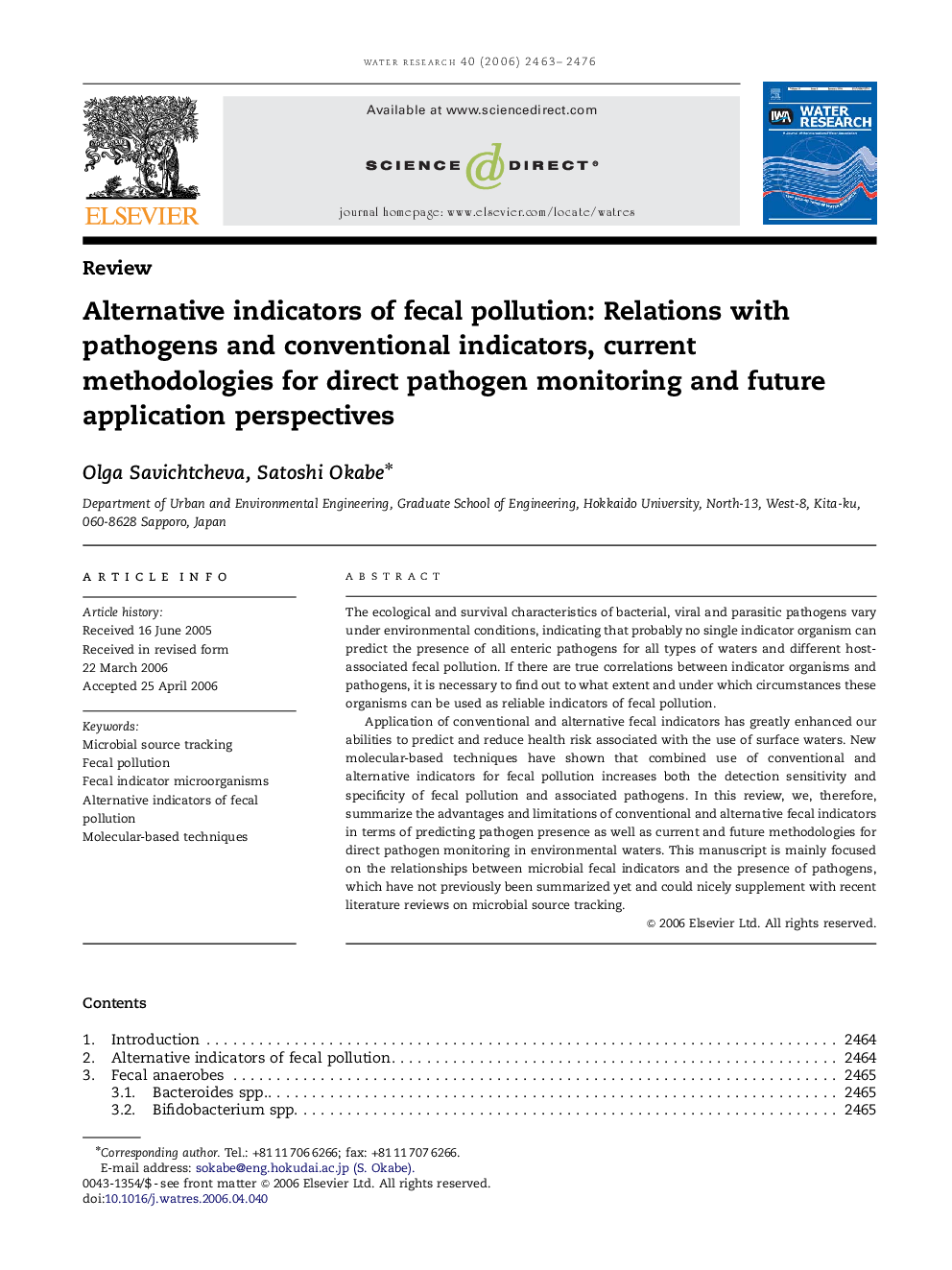| Article ID | Journal | Published Year | Pages | File Type |
|---|---|---|---|---|
| 4487096 | Water Research | 2006 | 14 Pages |
The ecological and survival characteristics of bacterial, viral and parasitic pathogens vary under environmental conditions, indicating that probably no single indicator organism can predict the presence of all enteric pathogens for all types of waters and different host-associated fecal pollution. If there are true correlations between indicator organisms and pathogens, it is necessary to find out to what extent and under which circumstances these organisms can be used as reliable indicators of fecal pollution.Application of conventional and alternative fecal indicators has greatly enhanced our abilities to predict and reduce health risk associated with the use of surface waters. New molecular-based techniques have shown that combined use of conventional and alternative indicators for fecal pollution increases both the detection sensitivity and specificity of fecal pollution and associated pathogens. In this review, we, therefore, summarize the advantages and limitations of conventional and alternative fecal indicators in terms of predicting pathogen presence as well as current and future methodologies for direct pathogen monitoring in environmental waters. This manuscript is mainly focused on the relationships between microbial fecal indicators and the presence of pathogens, which have not previously been summarized yet and could nicely supplement with recent literature reviews on microbial source tracking.
